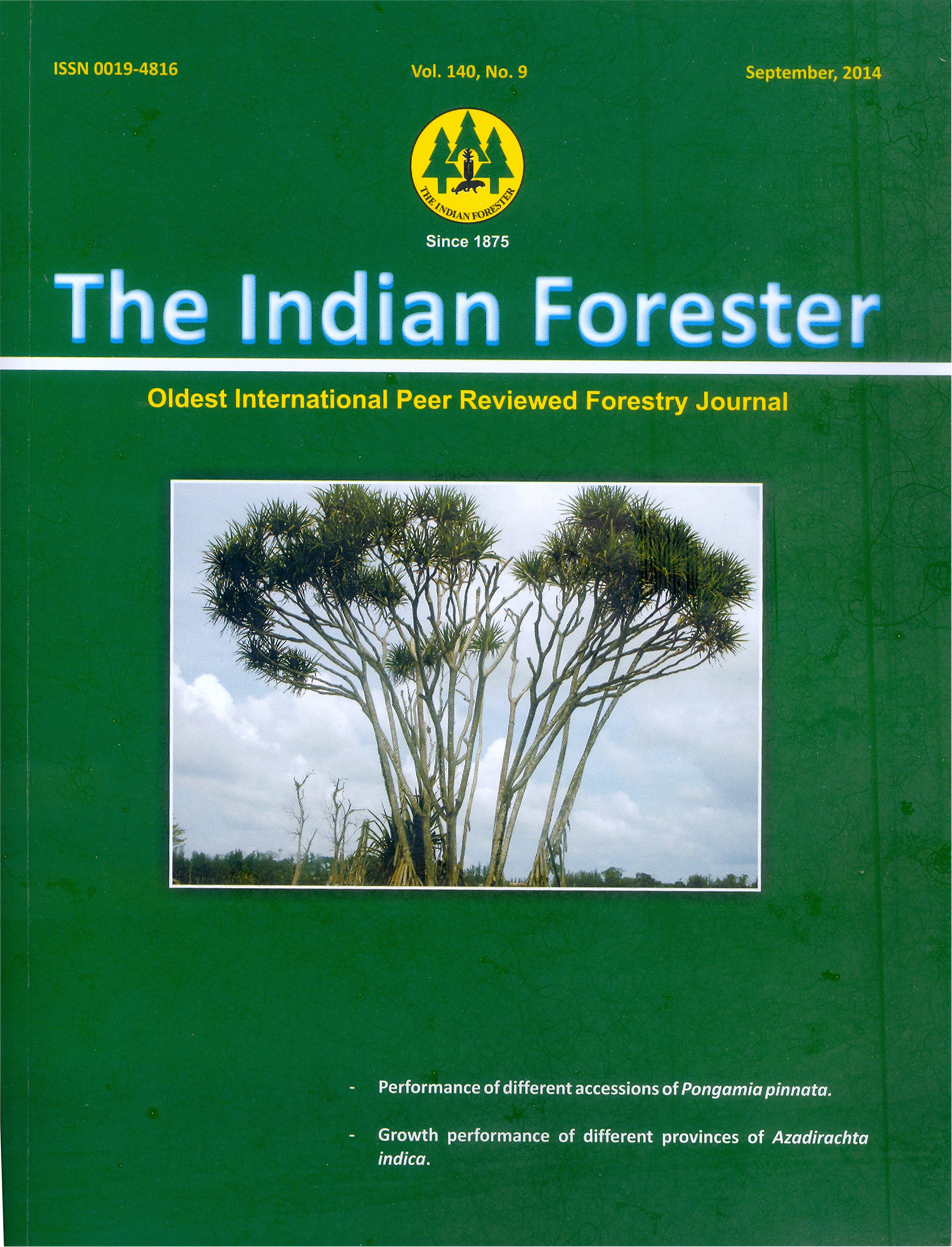Patterns of Morphometric Variability in Dendrocalamus Hamiltonii Munro Populations across East Khasi Hills, Northeast India
DOI:
https://doi.org/10.36808/if/2014/v140i9/52353Keywords:
Morphological Parameters, Dendrocalamus Hamiltonii , Clump Improvement, Morphometric VariabilityAbstract
A study was undertaken in Dendrocalamus hamiltonii to assess variability and structure in seven commercially important morphological parameters in 120 sampled clumps across six populations in east Khasi Hills. Statistically significant variations were found in six parameters viz., culm length, culm diameter at breast height (dbh), culm internode length, number of nodes, culm wall thickness and culm lumen diameter. A high negative and significant (p = 0.01) correlation between culm internode length and culm wall thickness was observed. Principal components analysis of populations based on morphological parameters differentiated Khasi populations from the lone population in Naga Hills. This variation between the two regions could be explained by the parameters culm wall thickness and internode length. No clear population structure was detected in the Khasi Hills populations, where some degree of overlapping among populations was observed indicating continuous variation in the observed morphological parameters.References
Banik R.L. and Das S. (1996). Studies on culm diameter, wall thickness and the internode length in relation to habitat condition of some bamboo species of Bangladesh, Journal of non-Timber Forest Products, 3: 126-131.
Bhaskar B.P., Mishra J.P., Baruah S.U., Vadivelu S., Sen T.K., Butte P.S. and Dutta D.P. (2004). Soils on Jhum cultivated hill slopes of Narang- Kongripara watershed in Meghalaya, Journal of the Indian Society of Soil Science, 52(2): 125-133.
Bhatt B.P., Singha L.B., Sachan M.S. and Singh K. (2004). Commercial edible bamboo species of the northeastern Himalayan region, India, Part I: young shoot sales, Journal of Bamboo and Rattan, 3: 337-364.
Joseph J. (1982). Flora of Nongpoh and vicinity, east Khasi Hills district, Meghalaya. Forest Department, Government of Meghalaya, Shillong. 102 pp.
Kochhar S., Mal B. and Chaudhary R.G. (1988). Population aspect of the phonological behaviour of bamboo germplasm. In: Bamboos Current Research (I.V.R. Rao, R. Gnanaharan and C.B. Sastry, Eds.), KFRI, Peechi and IDRC, Singapore. pp. 51-58.
Pattanaik S. (2008). Distribution, diversity and relationships in Dendrocalamus hamiltonii Munro: an appraisal using GIS and AFLP markers, Ph.D. thesis, School of Agricultural and Forest Sciences, Bangor University, Bangor: 176 pp.
Rohlf F.J. (2000). NTSYSpc: numerical taxonomy and multivariate analysis system, version 2.11X. Applied Biostatistics, New York. Stapleton C.M.A. (1994). The bamboos of Nepal and Bhutan, Part I, Edinburgh Journal of Botany, 51: 1-32.
Ward D.B. (1974). The 'ignorant mans' technique of sampling plant populations, Taxon, 23: 325-330.
Downloads
Downloads
Published
How to Cite
Issue
Section
License
Unless otherwise stated, copyright or similar rights in all materials presented on the site, including graphical images, are owned by Indian Forester.





